Top Tools and APIs Every Crypto Programmer Should Know
%201.svg)
%201.svg)

The rapid evolution of cryptocurrencies and blockchain technology has transformed the programmer's toolkit. With thousands of coins, myriad chains, and constantly changing data, developers face a unique set of challenges—and opportunities—for innovation. Access to robust APIs, powerful software tools, and automation frameworks is now the backbone of successful crypto development. But which tools and APIs stand out, and how can programmers leverage them most effectively?
Data Access: Core APIs That Power Crypto Apps
APIs are the connective tissue of crypto ecosystems, granting developers access to everything from real-time prices to on-chain analytics. Leading APIs for general-purpose crypto data include:
- Token Metrics API: Delivers real-time prices, trading signals, token analytics, and on-chain intelligence in a streamlined package—ideal for portfolio tools, custom dashboards, and AI crypto agents.
- CoinGecko API & CoinMarketCap API: Widely adopted for fetching coin prices, historical data, and basic market stats. Both offer generous free tiers and support for hundreds of assets.
- CryptoCompare API: Excels at aggregated pricing and historical OHLCV data for major and emerging tokens.
- Glassnode API: Provides on-chain analytics, key network health indicators, and user address statistics for Bitcoin, Ethereum, and select other blockchains.
When evaluating APIs, focus on latency, coverage, reliability, and pricing. For power users, combining multiple APIs—one for fast price ticks, another for analytics—can yield a richer app experience.
Web3 Libraries and Blockchain Interaction
To move beyond price feeds and statistics, programmers need libraries that let them interact directly with blockchains. Popular choices include:
- web3.js (for Ethereum and EVM chains): The standard JavaScript library for reading from and writing to smart contracts. Its widespread adoption means strong documentation and fast troubleshooting.
- ethers.js: A leaner, modern alternative to web3.js with an improved developer experience and clear separation of concerns. Frequently used in dApp and wallet development.
- Solana Web3.js: Purpose-built for the Solana chain, providing access to wallet management, transaction sending, and program deployment.
- BitcoinJS: A robust set of bitcoin-focused tools for crafting transactions, managing keys, and building lighter clients.
When building cross-chain or multi-protocol applications, consider abstraction libraries like Moralis or Infura to standardize access and boost reliability.
Automation, Research, and AI Analytics
Quantitative research, automated trading, and actionable intelligence are increasingly important areas for crypto programmers. Here are some tools advancing the field:
- Python Libraries (ccxt, pycoingecko, web3.py): The ccxt library supports unified trading API access to dozens of exchanges for algorithmic trading and market research. pycoingecko fetches comprehensive price data from CoinGecko, while web3.py allows direct Ethereum interaction.
- Alchemy & QuickNode: Managed web3 infrastructure layers that offer turnkey node hosting, enhanced analytics, and performance monitoring. These services reduce operational headaches when scaling production apps.
- AI-Powered Research Tools (Token Metrics, Messari): Platforms like Token Metrics and Messari leverage AI and big data to surface trends, risk signals, and deep network insights—resources invaluable for building smarter automation and predictive analytics.
For custom analytics, combining API data with Python-based data science (using Pandas, Numpy, or PyTorch/TensorFlow) unleashes powerful modeling capabilities. Many teams run scheduled scripts or Lambda jobs that pull API data, process it, and feed insights directly into dashboards or real-time agents.
Open Source and Collaborative Developer Tools
Open source projects have accelerated innovation in crypto. For developers, the following tools and resources unlock new possibilities:
- Hardhat & Truffle: Smart contract testing, simulation, and deployment for EVM-compatible chains. Supports complex scripting and plugin extensions.
- MetaMask APIs: Essential for dApp compatibility, wallet integration, and user authentication across the web3 landscape.
- Foundry: A high-performance, developer-friendly toolkit for smart contract creation with extensive testing capabilities.
- OpenZeppelin Libraries: Battle-tested, audited Solidity contracts and utilities for security-focused development. Saves time and reduces risk.
Participating in open source helps programmers stay at the forefront of security updates, tooling improvements, and emerging best practices.
Build Smarter Crypto Apps & AI Agents with Token Metrics
Token Metrics provides real-time prices, trading signals, and on-chain insights all from one powerful API. Grab a Free API Key
What are the most popular APIs for crypto data access?
Some of the most widely used APIs include the Token Metrics API, CoinGecko API, and CryptoCompare API for price data, plus Glassnode and Chainalysis for on-chain analytics. The best API depends on use case—real-time trading apps may prioritize low-latency data, while research dashboards need deeper analytics and coverage.
How do you choose the right programming language for crypto development?
The choice depends on your project: Solidity is used for Ethereum smart contracts, Rust and C++ for Solana and Polkadot, JavaScript for web3 frontends, and Python for automation and analytics. Many developers combine languages for optimal results.
Can I integrate crypto APIs into mobile apps?
Yes. Most crypto APIs offer REST or WebSocket endpoints that can be consumed by mobile frontends (iOS, Android, cross-platform). Security and performance are critical—always safeguard keys and minimize on-device sensitive data.
What is the value of AI in developer crypto tools?
AI supports smarter data synthesis, risk assessment, pattern recognition, and predictive analytics—streamlining everything from backtesting to sentiment analysis. Platforms such as Token Metrics bring AI-driven signals and deep analysis to developer workflows.
Are open source crypto developer tools secure?
Open source tools like Hardhat, Truffle, and OpenZeppelin are generally well-maintained and audited but still require careful review, secure library management, and rigorous testing. Always vet dependencies and stay up to date with patches.
Disclaimer
This blog is for informational and educational purposes only. It does not constitute investment advice, endorsement, or financial recommendations. All tools and APIs discussed should be independently evaluated for your use case and risk profile.
AI Agents in Minutes, Not Months


Create Your Free Token Metrics Account





.png)
Recent Posts
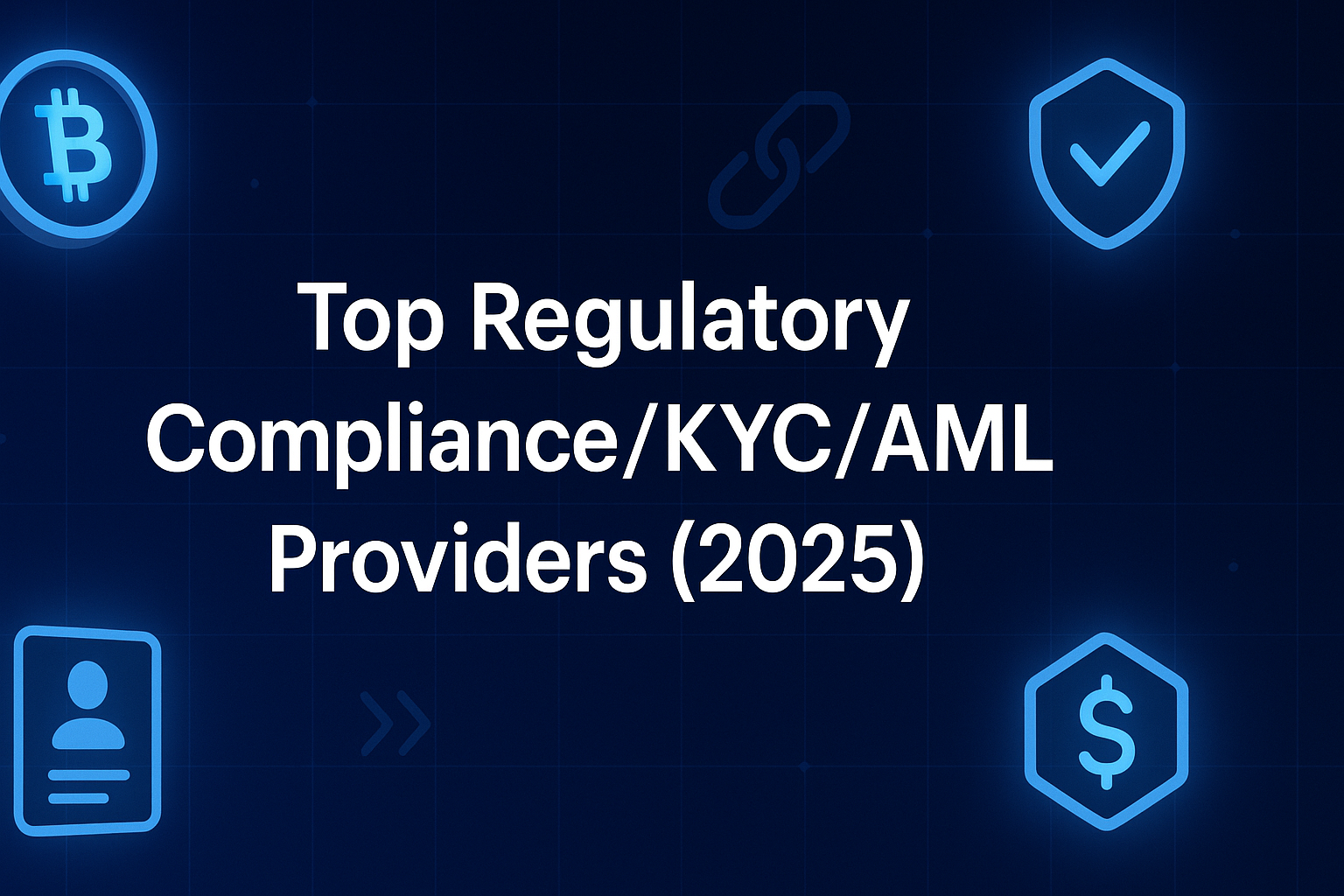
Top Regulatory Compliance/KYC/AML Providers (2025)
%201.svg)
%201.svg)
Why crypto compliance, KYC/AML & blockchain analytics vendors Matters in September 2025
If you operate an exchange, wallet, OTC desk, or DeFi on-ramp, choosing the right KYC/AML providers can be the difference between smooth growth and painful remediation. In 2025, regulators continue to tighten enforcement (Travel Rule, sanctions screening, transaction monitoring), while criminals get more sophisticated across bridges, mixers, and multi-chain hops. This guide shortlists ten credible vendors that help crypto businesses verify users, monitor wallets and transactions, and comply with global rules.
Definition (snippet): KYC/AML providers are companies that deliver identity verification, sanctions/PEP screening, blockchain analytics, transaction monitoring, and Travel Rule tooling so crypto businesses can meet regulatory obligations and reduce financial crime risk.
SECONDARY_KEYWORDS woven below: crypto compliance, blockchain analytics, transaction monitoring, Travel Rule.
How We Picked (Methodology & Scoring)
- What we scored (weights): Market adoption & scale (liquidity 30 as a proxy for coverage & volume handled), security posture 25 (audits, data protection, regulatory alignment), coverage 15 (chains, assets, jurisdictions), costs 15 (pricing transparency, efficiency), UX 10 (API, case mgmt., automation), support 5 (docs, SLAs).
- Data sources: Only official product pages, security/trust centers, and documentation; widely cited market datasets used only to cross-check asset/chain coverage. “Last updated September 2025.” Chainalysis+2TRM Labs+2
Top 10 crypto compliance, KYC/AML & blockchain analytics vendors in September 2025
1. Chainalysis — Best for cross-chain transaction risk & investigations
Why Use It: Chainalysis KYT and Reactor pair broad chain/token coverage with real-time risk scoring and deep investigative tooling. If you need automated alerts on deposits/withdrawals and the ability to trace through bridges/mixers/DEXs, it’s a proven, regulator-recognized stack.
Best For: Centralized exchanges, custodians, banks with crypto exposure, law enforcement teams.
Notable Features: Real-time KYT alerts • Cross-chain tracing • Case management & APIs • Attribution datasets.
Consider If: You want an enterprise-grade standard and investigator workflows under one roof.
Alternatives: TRM Labs, Elliptic. Chainalysis+1
Regions: Global • Fees/Notes: Quote-based, volume/seat tiers.

2. TRM Labs — Best for fast-moving threat intel & sanctions coverage
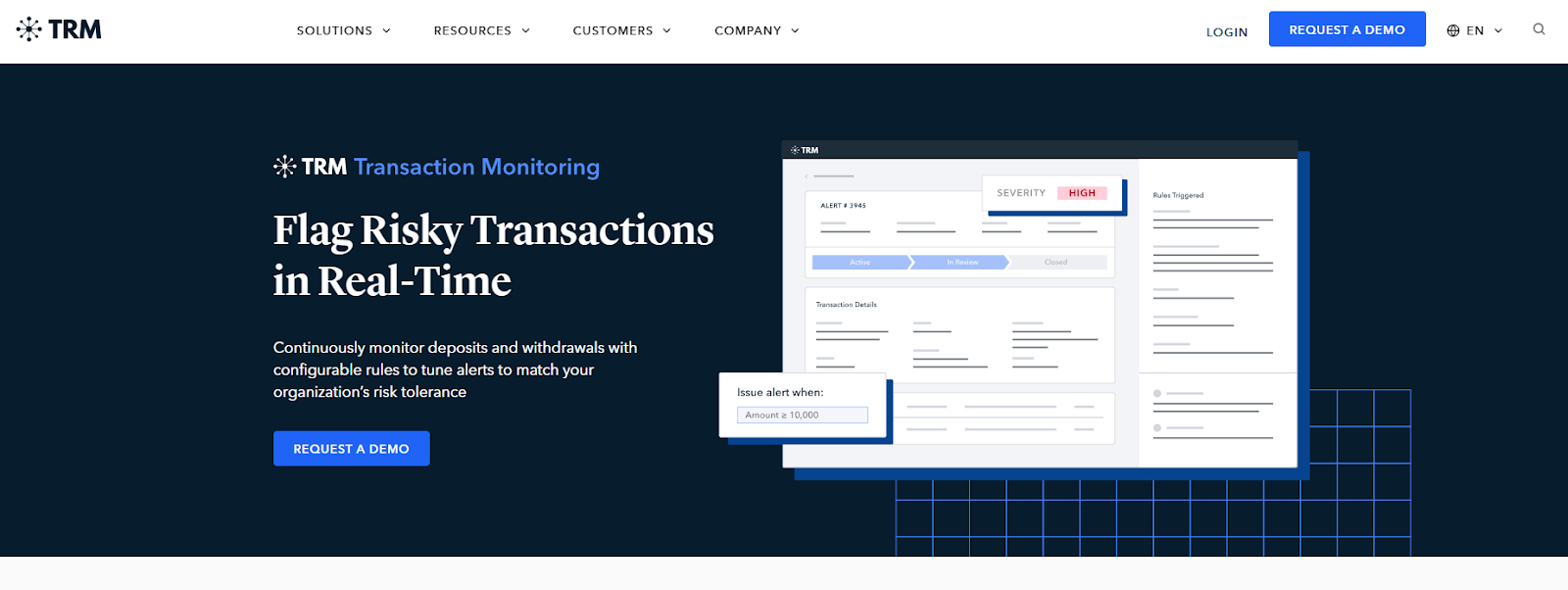
Why Use It: TRM’s transaction monitoring taps a large, fast-growing database of illicit activity and extends screening beyond official lists to include threat actor footprints on-chain. Strong coverage and practical APIs make it easy to plug into existing case systems.
Best For: Exchanges, payment processors, fintechs expanding into web3, risk teams that need flexible rules.
Notable Features: Real-time monitoring • Sanctions & threat actor intelligence • Case mgmt. integrations • Multi-chain coverage.
Consider If: You prioritize dynamic risk models and frequent list updates.
Alternatives: Chainalysis, Elliptic. TRM Labs+1
Regions: Global • Fees/Notes: Enterprise contracts; volume-based.
3. Elliptic — Best for scalable wallet screening at exchange scale
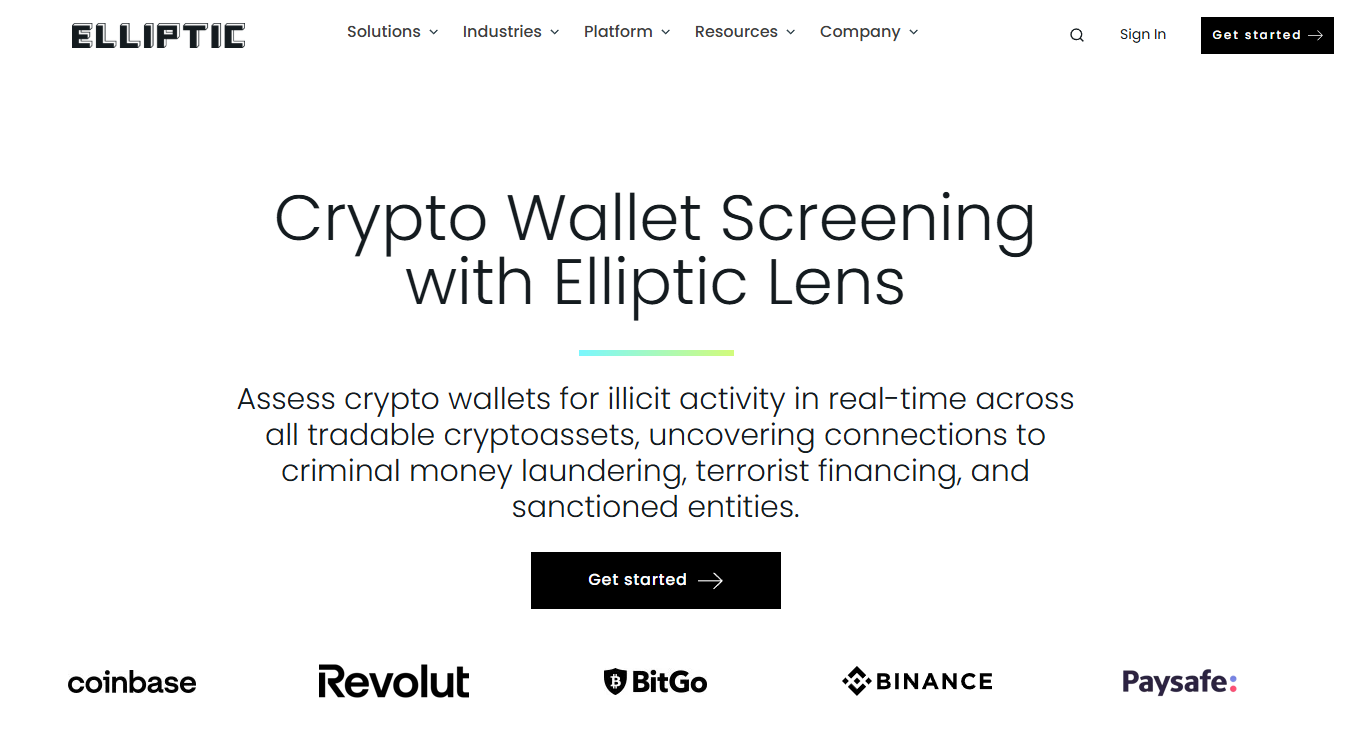
Why Use It: Elliptic’s Lens and Screening solutions streamline wallet/transaction checks with chain-agnostic coverage and audit-ready workflows. It’s built for high-volume screening with clean APIs and strong reporting for regulators and internal audit.
Best For: CEXs, payment companies, institutional custody, risk ops needing bulk screening.
Notable Features: Wallet & TX screening • Cross-chain risk detection • Audit trails • Customer analytics.
Consider If: You need mature address screening and large-scale throughput.
Alternatives: Chainalysis, TRM Labs. Elliptic+1
Regions: Global • Fees/Notes: Quote-based; discounts by volume.
4. ComplyAdvantage — Best for sanctions/PEP/adverse media screening in crypto
Why Use It: An AML data powerhouse for KYC and ongoing monitoring that many crypto companies use to meet screening obligations and reduce false positives. Strong watchlist coverage, adverse media, and continuous monitoring help you satisfy banking partners and auditors.
Best For: Exchanges and fintechs that want robust sanctions/PEP data plus transaction monitoring.
Notable Features: Real-time sanctions & watchlists • Ongoing monitoring • Payment screening • Graph analysis.
Consider If: You want a single vendor for screening + monitoring alongside your analytics stack.
Alternatives: Jumio (Screening), Sumsub. ComplyAdvantage+1
Regions: Global • Fees/Notes: Tiered enterprise pricing.
5. Sumsub — Best all-in-one KYC/KYB + crypto monitoring
Why Use It: Crypto-focused onboarding with liveness, documents, KYB, Travel Rule support, and transaction monitoring—plus in-house legal experts to interpret changing rules. Good for teams that need to orchestrate identity checks and AML controls in one flow.
Best For: Global exchanges, NFT/DeFi ramps, high-growth startups entering new markets.
Notable Features: KYC/KYB • Watchlists/PEPs • Device intelligence • Crypto TX monitoring • Case management.
Consider If: You want one vendor for identity + AML + Travel Rule workflow.
Alternatives: Jumio, ComplyAdvantage. Sumsub+1
Regions: Global • Fees/Notes: Per-verification & volume tiers.
6. Jumio — Best for enterprise-grade identity + AML screening
Why Use It: Jumio combines biometric KYC with automated AML screening (PEPs/sanctions) and ongoing monitoring. Its “KYX” approach provides identity insights across the customer lifecycle, helping reduce fraud while keeping onboarding friction reasonable.
Best For: Regulated exchanges, banks, brokerages with strict KYC/AML controls.
Notable Features: Biometric verification • PEPs/sanctions screening • Ongoing monitoring • Single-API platform.
Consider If: You need global coverage and battle-tested uptime/SLA.
Alternatives: Sumsub, Onfido (not listed). Jumio+1
Regions: Global • Fees/Notes: Custom enterprise pricing.
7. Notabene — Best end-to-end Travel Rule platform
Why Use It: Notabene focuses on pre-transaction decisioning, counterparty VASP due diligence, and sanctions screening across multiple Travel Rule protocols. It’s purpose-built for crypto compliance teams facing enforcement of FATF Recommendation 16.
Best For: Exchanges, custodians, and B2B payment platforms needing Travel Rule at scale.
Notable Features: Pre-TX checks • Counterparty VASP verification • Multi-protocol messaging • Jurisdictional rules engine.
Consider If: Your regulators or banking partners expect full Travel Rule compliance today.
Alternatives: Shyft Veriscope, 21 Analytics. Notabene+1
Regions: Global • Fees/Notes: Annual + usage components.
8. Shyft Network Veriscope — Best decentralized, interoperable Travel Rule messaging
Why Use It: Veriscope provides decentralized VASP discovery, secure VASP-to-VASP PII exchange, and “sunrise issue” lookback to help during uneven global rollouts. Pay-as-you-go pricing can be attractive for newer programs.
Best For: Global VASPs that want decentralized discovery and interoperability.
Notable Features: Auto VASP discovery • Secure PII transfer (no central PII storage) • Lookback support • Interoperability.
Consider If: You prefer decentralized architecture and usage-based pricing.
Alternatives: Notabene, 21 Analytics. shyft.network+1
Regions: Global • Fees/Notes: Pay-as-you-go; no setup fees. shyft.network
9. Merkle Science — Best for predictive blockchain risk analytics
Why Use It: Merkle Science’s platform emphasizes predictive risk modeling and DeFi/smart contract forensics, helping compliance teams see beyond static address tags. Good complement when you monitor emerging chains and token types.
Best For: Exchanges and protocols active in DeFi, new L1/L2 ecosystems, or smart-contract risk.
Notable Features: Predictive risk scores • DeFi & contract forensics • Case tooling • API integrations.
Consider If: You need analytics tuned for newer protocols and token standards.
Alternatives: Chainalysis, TRM Labs. merklescience.com+1
Regions: Global • Fees/Notes: Quote-based enterprise pricing.
10. Scorechain — Best EU-born analytics with audit-ready reporting
Why Use It: Based in Luxembourg, Scorechain offers risk scoring, transaction monitoring, and reporting designed to fit EU frameworks—useful for MiCA/TFR-aligned programs. Teams like the straightforward reporting exports for audits and regulators.
Best For: EU-focused exchanges, neobanks, and tokenization platforms.
Notable Features: Risk scoring • Transaction monitoring • Audit-ready reports • Tools for Travel Rule workflows.
Consider If: Your footprint is primarily EU and you want EU-centric vendor DNA.
Alternatives: Crystal (EU), Elliptic. Scorechain+1
Regions: EU/Global • Fees/Notes: Enterprise licenses; fixed and usage options.
Decision Guide: Best By Use Case
- Regulated U.S. exchange: Chainalysis, TRM Labs
- Global wallet screening at scale: Elliptic
- Enterprise KYC + AML screening combo: Jumio, Sumsub
- Travel Rule (end-to-end ops): Notabene
- Travel Rule (decentralized, pay-as-you-go): Shyft Veriscope
- DeFi/smart-contract forensics: Merkle Science
- EU-centric programs / audit exports: Scorechain
- Sanctions/PEP data depth: ComplyAdvantage
How to Choose the Right crypto compliance, KYC/AML & blockchain analytics vendors (Checklist)
- Jurisdiction & licensing: Confirm the vendor supports your countries and regulator expectations (e.g., FATF R.16 Travel Rule).
- Coverage: Chains/tokens you touch today and plan to touch in 12–18 months.
- Identity depth: Liveness, device checks, KYB for entities, ongoing monitoring.
- Analytics & monitoring: Risk models, false-positive rate, sanctions coverage cadence.
- APIs & workflow: Case management, alert triage, audit trails, BI exports.
- Costs: Pricing model (per-verification, per-alert, or pay-as-you-go).
- Security: Data handling, PII minimization, breach history, regional data residency.
- Red flags: “Black box” risk scores without documentation; no audit logs.
Use Token Metrics With Any crypto compliance, KYC/AML & blockchain analytics vendors
- AI Ratings: Screen assets and spot structural risks before you list.

- Narrative Detection: Track shifts that correlate with on-chain risk trends.
- Portfolio Optimization: Balance exposure as assets pass compliance checks.
- Alerts & Signals: Monitor entries/exits once assets are approved.
Workflow: Research vendors → Select/implement → List/enable assets → Monitor with Token Metrics alerts.

Primary CTA: Start a free trial of Token Metrics.

Security & Compliance Tips
- Enforce 2FA and role-based access for compliance consoles.
- Separate PII from blockchain telemetry; minimize retention.
- Implement Travel Rule pre-transaction checks where required. FATF
- Test sanctions list update cadences and backfill behavior.
- Document SAR/STR processes and case handoffs.
This article is for research/education, not financial advice.
Beginner Mistakes to Avoid
- Picking a vendor with great KYC but no Travel Rule path.
- Ignoring chain/token roadmaps—coverage gaps appear later.
- Under-investing in case management/audit trails.
- Relying solely on address tags without behavior analytics.
- Not budgeting for ongoing monitoring (alerts grow with volume).
FAQs
What’s the difference between KYC and KYT (Know Your Transaction)?
KYC verifies an individual or entity at onboarding and during refresh cycles. KYT/transaction monitoring analyzes wallets and transfers in real time (or post-event) to identify suspicious activity, sanctions exposure, and patterns of illicit finance. TRM Labs
Do I need a Travel Rule solution if I only serve retail in one country?
Possibly. Many jurisdictions apply the Travel Rule above certain thresholds and when sending to other VASPs, even domestically. If you interoperate with global exchanges or custodians, you’ll likely need it. Notabene
How do vendors differ on sanctions coverage?
Screening providers update against official lists and, in some cases, extend coverage using intelligence on known threat actors’ wallets. Look for rapid refresh cycles and retroactive screening. TRM Labs
Can I mix-and-match KYC and blockchain analytics vendors?
Yes. Many teams use a KYC/AML screening vendor plus a blockchain analytics platform; some suites offer both, but best-of-breed mixes are common.
What’s a good starting stack for a new exchange?
A KYC/KYB vendor (Jumio or Sumsub), a sanctions/PEP screening engine (ComplyAdvantage or your KYC vendor’s module), a blockchain analytics platform (Chainalysis/TRM/Elliptic), and a Travel Rule tool (Notabene or Veriscope).
Conclusion + Related Reads
Compliance isn’t one tool; it’s a stack. If you’re U.S.-regulated and high-volume, start with Chainalysis or TRM plus Jumio or Sumsub. If you’re EU-led, Scorechain can simplify audits. For Travel Rule, choose Notabene (end-to-end) or Veriscope (decentralized/pay-as-you-go). Pair your chosen stack with Token Metrics to research, monitor, and act with confidence.
Related Reads:
- Best Cryptocurrency Exchanges 2025
- Top Derivatives Platforms 2025
- Top Institutional Custody Providers 2025
Sources & Update Notes
We independently reviewed official product pages, docs, and security/trust materials for each provider (no third-party links in body). Shortlist refreshed September 2025; we’ll revisit as regulations, features, and availability change.
- Chainalysis — KYT product; platform overview. Chainalysis+1
- TRM Labs — Transaction Monitoring; platform overview; glossary. TRM Labs+2TRM Labs+2
- Elliptic — Lens (wallet screening); Screening solution. Elliptic+1
- ComplyAdvantage — Crypto AML; sanctions & watchlists; platform. ComplyAdvantage+2ComplyAdvantage+2
- Sumsub — Crypto KYC; Crypto Monitoring. Sumsub+1
- Jumio — AML Screening; Platform; KYC & AML use case. Jumio+2Jumio+2
- Notabene — Travel Rule compliance; jurisdiction tracker. Notabene+1
- Shyft Veriscope — Product page; docs. shyft.network+1
- Merkle Science — Platform overview; investigations features. merklescience.com+1
Scorechain — Product pages & glossary resources. Scorechain+1

Best Crypto Law Firms (2025)
%201.svg)
%201.svg)
Why law firms for crypto, blockchain & digital assets matter in September 2025
If you touch tokens, stablecoins, exchanges, DeFi, custody, or tokenized RWAs, your choice of counsel can make or break the roadmap. This guide ranks the best crypto law firms for 2025, with a practical look at who they’re best for, where they operate, and what to consider on fees, scope, and risk. In one line: a crypto law firm is a multidisciplinary legal team that advises on digital asset regulation, transactions, investigations, and disputes.
Macro backdrop: the U.S. regulatory stance is shifting (e.g., an SEC crypto task force and fresh policy signals), while the EU’s MiCA, UK rules, and APAC regimes continue to evolve—raising the stakes for compliant go-to-market and ops. Sidley Austin+1
How We Picked (Methodology & Scoring)
- Scale (mapped from “liquidity,” 30%): depth of bench across regulatory, corporate, enforcement, litigation, restructuring.
- Security posture (25%): track record in compliance, investigations, audits, risk, and controls.
- Coverage (15%): multi-jurisdictional reach (US/EU/APAC), ability to coordinate cross-border matters.
- Costs (15%): transparency on scoping; ability to structure work efficiently for stage and size.
- UX (10%): clarity, speed, practical guidance for founders and institutions.
- Support (5%): responsiveness; client tools (trackers, hubs, resource centers).
Data sources: official firm practice pages, security/regulatory hubs, and disclosures; third-party market datasets used only as cross-checks. Last updated: September 2025.
Top 10 law firms for crypto, blockchain & digital assets in September 2025
1. Latham & Watkins — Best for full-stack, cross-border matters

- Why Use It: Latham’s Digital Assets & Web3 team spans regulatory, transactions, and litigation, with dedicated coverage of exchanges, infrastructure providers, miners, DAOs, and tokenization. Deep financial regulatory and tech bench supports complex, global plays. lw.com+1
- Best For: Global operators; exchanges/market infrastructure; tokenization/RWA; enterprise Web3.
- Notable Features: Global financial regulatory team; DAO/NFT/DeFi expertise; structured products/derivatives; privacy/cybersecurity support. lw.com+2lw.com+2
- Consider If: Premium BigLaw pricing; scope thoroughly.
- Regions: Global
- Fees Notes: Bespoke; request scoping and staged budgets.
- Alternatives: Skadden, A&O Shearman
2. Davis Polk & Wardwell — Best for U.S. regulatory strategy & market structure
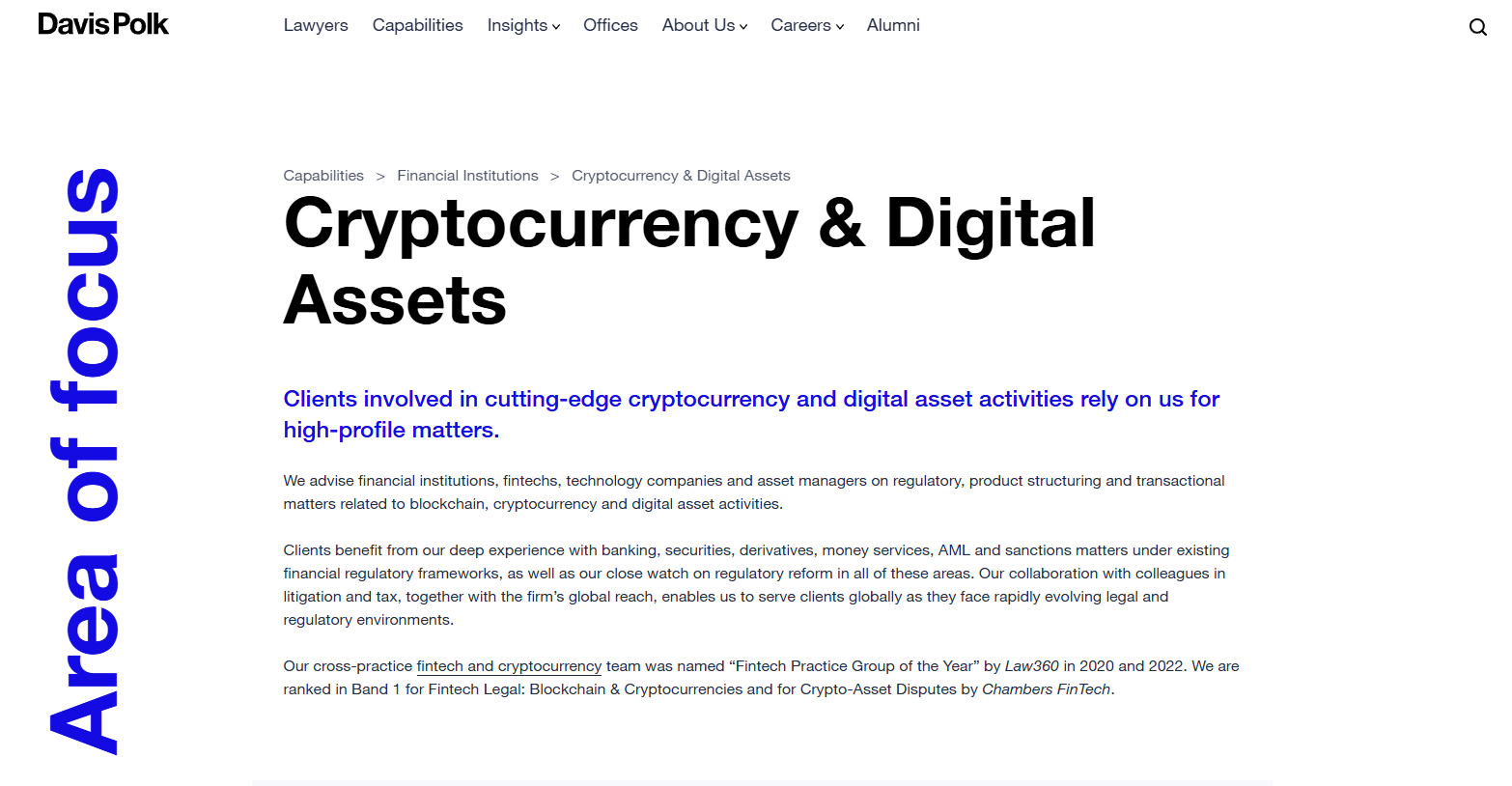
- Why Use It: Longstanding financial institutions focus with crypto trading, custody, and product structuring experience; maintains a public Crypto Regulation Hub and frequent client updates. Strong SEC/CFTC/ETP literacy. Davis Polk+2Davis Polk+2
- Best For: Banks/broker-dealers; asset managers/ETPs; trading venues; fintechs.
- Notable Features: Product structuring; payments & market infra; bank/BD/ATS issues; policy tracking. Davis Polk
- Consider If: Focus is primarily U.S.; engage local counsel for APAC.
- Regions: US/EU (with partner firms)
- Fees Notes: Premium; ask about blended rates and caps for regulatory sprints.
- Alternatives: Sidley, WilmerHale
3. Skadden, Arps, Slate, Meagher & Flom LLP — Best for complex deals, enforcement & high-stakes disputes

- Why Use It: Broad digital assets group spanning DeFi, L2s, NFTs, stablecoins, DAOs, and custody—plus capital markets and investigations. Recent materials highlight breadth across technology transactions, privacy, and regulatory. Skadden+1
- Best For: Public companies; unicorns; exchanges; token/NFT platforms.
- Notable Features: SEC/NYDFS engagement; funds formation; tax and privacy guidance; M&A/capital markets. Skadden
- Consider If: Suited to complex or contentious matters; pricing reflects that.
- Regions: Global
- Fees Notes: Matter-based staffing; clarify discovery/enforcement budgets early.
- Alternatives: Latham, Quinn Emanuel
4. Sidley Austin LLP — Best for licensing, payments & U.S.–EU regulatory strategy
- Why Use It: Multidisciplinary fintech/blockchain team with strong money transmission, securities, broker-dealer, and global regulatory capabilities; publishes timely bulletins on fast-moving U.S. policy. Sidley Austin+2Sidley Austin+2
- Best For: Payments/MTLs; trading venues; funds/advisers; tokenization pilots.
- Notable Features: Fund formation; AML program design; cross-border counsel (SEC, CFTC, FINRA; UK/HK/EU). Sidley Austin
- Consider If: Heavier on financial-services lens; ensure web3 product counsel is in scope.
- Regions: US/EU/APAC
- Fees Notes: Ask about fixed-fee licensing packages.
- Alternatives: Davis Polk, Hogan Lovells
5. A&O Shearman — Best for multi-jurisdictional matters across US/UK/EU
- Why Use It: The merged transatlantic firm offers a deep digital assets bench spanning banking, markets, disputes, and restructuring, with active insights on fintech and crypto. A&O Shearman+2A&O Shearman+2
- Best For: Global exchanges and issuers; banks/EMIs; cross-border investigations; MiCA + U.S. buildouts.
- Notable Features: UK/EU licensing; U.S. markets issues; contentious & non-contentious coverage under one roof. A&O Shearman
- Consider If: Validate local counsel for non-core APAC jurisdictions.
- Regions: Global
- Fees Notes: Expect BigLaw rates; request phased milestones.
- Alternatives: Latham, Hogan Lovells
6. Perkins Coie LLP — Best for builders & early-stage web3
- Why Use It: One of the earliest major-firm blockchain groups; counsels across projects, fintech/payments, and enforcement, and maintains public regulatory trackers and timelines. Perkins Coie+1
- Best For: Protocol teams; startups; marketplaces; payments/fintechs.
- Notable Features: SEC/CFTC timelines; global regulatory trackers; AML/sanctions and licensing support. Perkins Coie
- Consider If: For late-stage, compare bench size on multi-jurisdiction disputes.
- Regions: US with global reach
- Fees Notes: Often startup-friendly scoping; confirm billing model.
- Alternatives: Cooley, Wilson Sonsini
7. Kirkland & Ellis LLP — Best for funds, M&A and restructuring overlays
- Why Use It: Market-leading platform for investment funds, M&A, investigations, and restructurings—useful when crypto intersects with bankruptcy, PE, or complex transactions. Global footprint with expanding broker-dealer and exchange experience. Kirkland & Ellis LLP+2Kirkland & Ellis LLP+2
- Best For: Funds/asset managers; distressed situations; strategic M&A; enterprise pivots.
- Notable Features: Government/regulatory investigations; investment funds; global disputes and restructuring. Kirkland & Ellis LLP
- Consider If: No single “crypto hub” page—confirm dedicated team for token issues up front.
- Regions: Global
- Fees Notes: Complex matters = premium; align on discovery scope.
- Alternatives: Skadden, Quinn Emanuel
8. Cooley LLP — Best for venture-backed startups & token launches
- Why Use It: Tech-first firm with robust startup and capital markets DNA; advises on MiCA/FCA regimes in Europe and U.S. compliance for tokenization. Cooley+2Cooley+2
- Best For: Seed-to-growth startups; token/NFT platforms; enterprise pilots.
- Notable Features: Company formation to IPO; MiCA/FCA guidance; policy insights; product counseling. Cooley
- Consider If: For heavy U.S. enforcement, compare with litigation-heavy peers.
- Regions: US/EU
- Fees Notes: Startup-friendly playbooks; discuss fixed-fee packages.
- Alternatives: Perkins Coie, Wilson Sonsini
9. WilmerHale — Best for investigations, enforcement & policy engagement
- Why Use It: Deep securities, futures, and derivatives roots; active “Crypto Currently” news center and webinars reflect policy fluency and regulator-facing experience. WilmerHale+2WilmerHale+2
- Best For: Public companies; trading venues; market infra; sensitive investigations.
- Notable Features: SEC/CFTC enforcement defense; policy monitoring; litigation and appellate support. WilmerHale
- Consider If: Suited to complex/contested matters; ensure day-to-day ops support is included.
- Regions: US/EU
- Fees Notes: Premium; align on incident response budget.
- Alternatives: Davis Polk, Sidley
10. Hogan Lovells — Best for global licensing, sanctions & public policy
- Why Use It: Global digital assets team with dedicated Digital Assets & Blockchain Hub, frequent payments/PSD3/MiCA insights, and public policy depth—useful for cross-border licensing and government engagement. www.hoganlovells.com+2digital-client-solutions.hoganlovells.com+2
- Best For: Global exchanges/EMIs; banks; tokenization programs; policy-heavy strategies.
- Notable Features: Multi-jurisdiction licensing; sanctions/AML; disputes and arbitration; regulatory trackers. digital-client-solutions.hoganlovells.com
- Consider If: BigLaw pricing; clarify deliverables for fast-moving launches.
- Regions: Global
- Fees Notes: Ask about phased licensing workstreams.
- Alternatives: A&O Shearman, Sidley
Decision Guide: Best By Use Case
- Regulated U.S. market structure (venues, ETPs): Davis Polk, WilmerHale
- Global, enterprise-grade multi-workstream: Latham, A&O Shearman
- Complex deals, investigations & disputes: Skadden, Kirkland
- Payments & money transmission licensing: Sidley, Hogan Lovells
- Startup & token launch playbooks: Perkins Coie, Cooley
- Litigation-first backup (if contested): Skadden; consider Quinn Emanuel as an alternative (not listed in Top 10)
How to Choose the Right Law Firm (Checklist)
- Jurisdictions you operate in (US/EU/APAC) and regulators you’ll face.
- Scope: corporate, regulatory, enforcement, litigation, restructuring—do they cover your stack?
- Security & compliance posture: AML/sanctions, custody rules, broker-dealer/adviser obligations.
- Fees: insist on scoping, budgets, and milestones; ask about blended rates or fixed-fee modules.
- Team: named partners + day-to-day associates; response times and communication norms.
- Tooling: client hubs/trackers and policy updates.
- Red flags: vague scope, no cross-border coordination, or “we’ve never done X in Y jurisdiction.”
Use Token Metrics With Any Law Firm
- AI Ratings to screen counterparties and venue risk.

- Narrative Detection to spot flows and policy-driven momentum.
- Portfolio Optimization to balance risk around regulatory events.
- Alerts/Signals to time entries/exits when legal catalysts hit.
Workflow: Research → Select → Execute with your firm → Monitor with alerts.
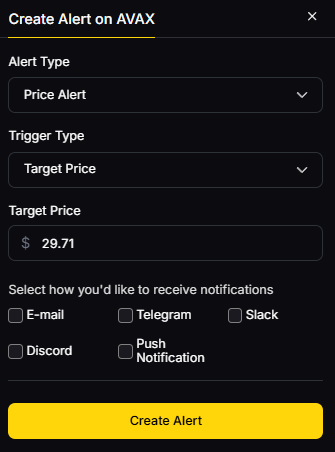
Primary CTA: Start free trial

Security & Compliance Tips
- Enforce strong 2FA and role-based access on exchange/broker accounts counsel touches.
- Set custody architecture and segregation early (on/off-exchange, MPC/HSM, signers).
- Complete KYC/AML and travel rule readiness; map licensure (e.g., MTL, MiCA).
- Use written RFQs/SOWs; document advice paths for auditability.
- Maintain wallet hygiene: least-privilege, whitelists, and incident playbooks.
This article is for research/education, not financial advice.
Beginner Mistakes to Avoid
- Hiring “general corporate” counsel for a regulatory problem.
- Under-scoping licensing (e.g., money transmission, broker-dealer, MiCA).
- Treating enforcement as PR—engage litigation/ex-government experience early.
- Launching tokens without jurisdictional analysis and disclosures.
- No budget guardrails: failing to phase work or set milestones.
FAQs
What does a crypto law firm actually do?
They advise on token and product structuring, licensing (e.g., money transmission, MiCA), securities/commodities issues, AML/sanctions, and handle investigations, litigation, deals, and restructurings. Many also publish policy trackers and hubs to keep clients current. Davis Polk+2Perkins Coie+2
How much do top crypto law firms cost?
Rates vary by market and complexity. Expect premium pricing for multi-jurisdictional or contested matters. Ask for detailed scopes, blended rates, and fixed-fee modules for licensing or audits.
Do I need a U.S. firm if I’m launching in the EU under MiCA?
Often yes—especially if you have U.S. users, listings, or investors. Use an EU lead for MiCA, coordinated with U.S. counsel for extraterritorial touchpoints and future expansion. Cooley
Which firms are strongest for enforcement risk?
WilmerHale, Davis Polk, Skadden, and Sidley bring deep SEC/CFTC literacy and investigations experience; assess fit by recent publications and team bios. Sidley Austin+3WilmerHale+3Davis Polk+3
Can these firms help with tokenization and RWAs?
Yes. Look for demonstrated work on structured products/derivatives, custody, and financial-market infrastructure, plus privacy/cyber overlays. lw.com
Conclusion + Related Reads
For U.S. market structure or sensitive investigations, Davis Polk and WilmerHale are hard to beat. For global, multi-workstream matters, start with Latham or A&O Shearman. Builders and venture-backed teams often pair Perkins Coie or Cooley with a litigation-ready option like Skadden. Whatever you choose, scope tightly, budget in phases, and align counsel with your roadmap.
Related Reads:
- Best Cryptocurrency Exchanges 2025
- Top Derivatives Platforms 2025
- Top Institutional Custody Providers 2025
Sources & Update Notes
We reviewed official digital-asset/fintech practice pages, firm resource hubs, and recent official insights; no third-party sites were linked in-body. Updated September 2025 for U.S. policy changes and EU MiCA implementation status.
- Latham & Watkins — “Digital Assets & Web3 Lawyers”; “Financial Regulatory.” lw.com+1
- Davis Polk — “Cryptocurrency & Digital Assets”; “Crypto Regulation Hub.” Davis Polk+1
- Skadden — “Blockchain and Digital Assets” (site + brochure). Skadden+1
- Sidley Austin — “Fintech”; “Blockchain” capabilities; recent Blockchain Bulletin. Sidley Austin+2Sidley Austin+2
- A&O Shearman — “Digital assets lawyers”; “A&O Shearman on fintech and digital assets”; digital assets brochure. A&O Shearman+2A&O Shearman+2
- Perkins Coie — “Blockchain & Digital Assets” + regulatory trackers. Perkins Coie+1
- Kirkland & Ellis — “Financial Technology (FinTech)” + firm capabilities and news. Kirkland & Ellis LLP+2Kirkland & Ellis LLP+2
- Cooley — “Blockchain Technology & Tokenization”; EU MiCA insights. Cooley+1
- WilmerHale — “Blockchain and Cryptocurrency”; Crypto Currently resources. WilmerHale+1
Hogan Lovells — “Digital Assets and Blockchain”; Digital Assets & Blockchain Hub; Payments newsletter. www.hoganlovells.com+2digital-client-solutions.hoganlovells.com+2
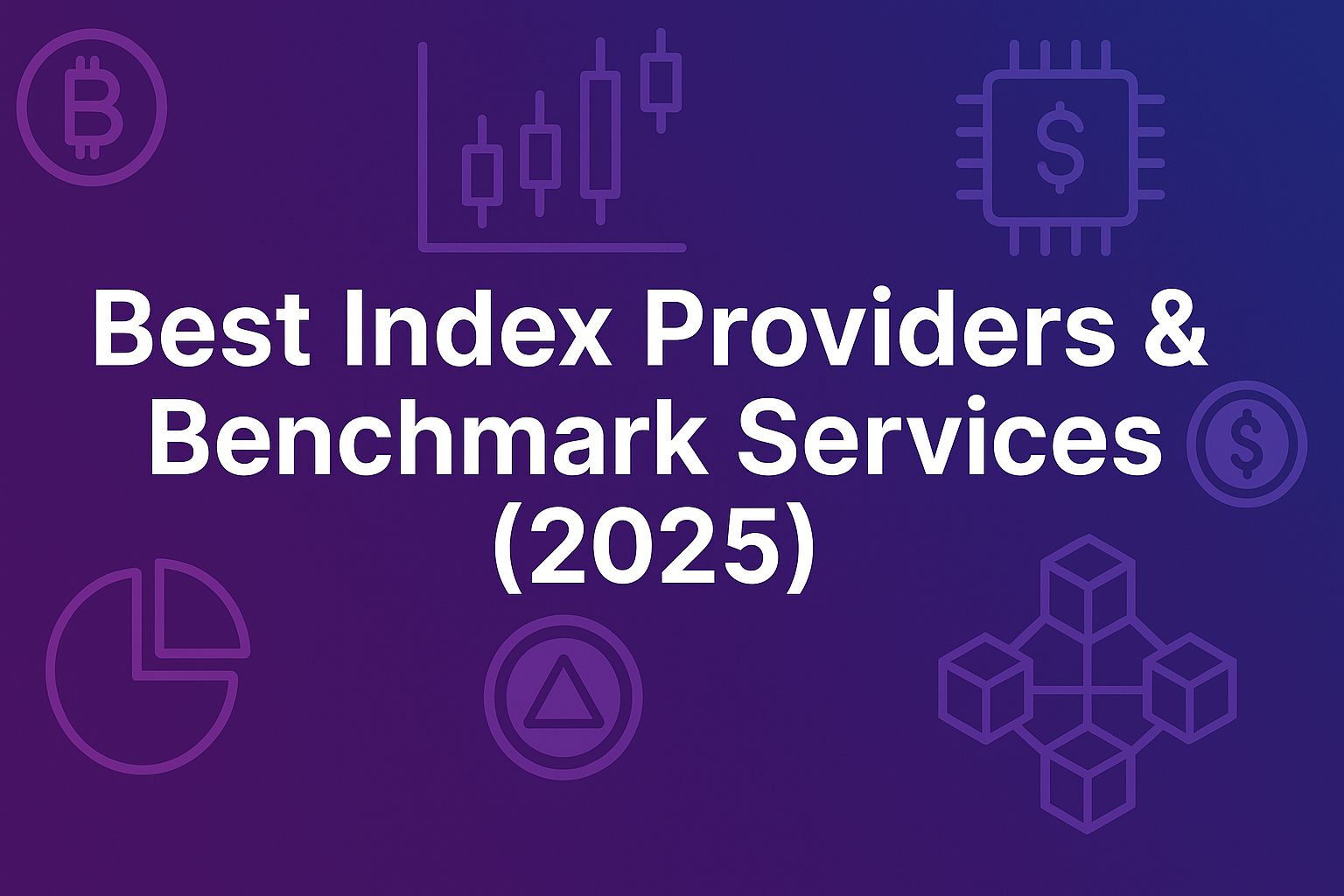
Best Index Providers & Benchmark Services (2025)
%201.svg)
%201.svg)
Why Crypto Index Providers & Benchmark Services Matter in September 2025
Crypto index providers give institutions and advanced investors rules-based, auditable ways to measure the digital asset market. In one sentence: a crypto index provider designs and administers regulated benchmarks—like price indices or market baskets—that funds, ETPs, quants, and risk teams can track or license. As liquidity deepens and regulation advances, high-integrity benchmarks reduce noise, standardize reporting, and enable products from passive ETPs to factor strategies.
If you’re comparing crypto index providers for portfolio measurement, product launches, or compliance reporting, this guide ranks the best options now—what they do, who they fit, and what to consider across security posture, coverage, costs, and support.
How We Picked (Methodology & Scoring)
- Liquidity (30%) – Does the provider screen venues/liquidity robustly and publish transparent inclusion rules?
- Security & Governance (25%) – Benchmark authorization/registration, governance committees, calculation resilience, and public methodologies/audits.
- Coverage (15%) – Breadth across single-asset, multi-asset, sectors/factors, and region eligibility.
- Costs (15%) – Licensing clarity, data access models, and total cost to operate products.
- UX (10%) – Docs, factsheets, ground rules, rebalancing cadence, client tooling.
- Support (5%) – Responsiveness, custom index build capacity, enterprise integration.
We relied on official product pages, methodologies, and security/governance disclosures; third-party datasets (e.g., venue quality screens) were used only as cross-checks. Last updated September 2025.
Top 10 Crypto Index Providers & Benchmark Services in September 2025
1) CF Benchmarks — Best for regulated settlement benchmarks
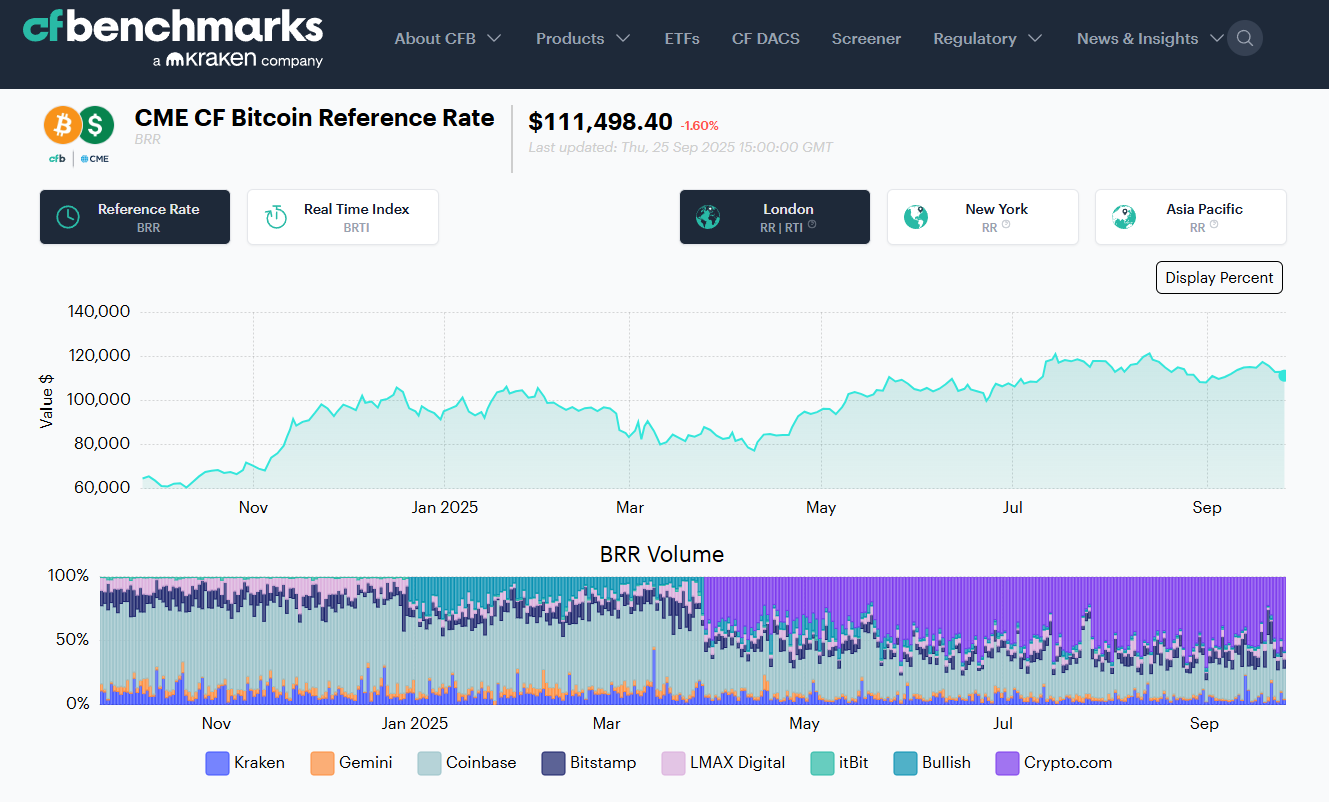
Why Use It: Administrator of the CME CF Bitcoin Reference Rate (BRR) and related benchmarks used to settle major futures and institutional products; UK BMR-registered with transparent exchange criteria and daily calculation since 2016. If you need benchmark-grade spot references (BTC, ETH and more) with deep derivatives alignment, start here. CF Benchmarks+1
Best For: Futures settlement references; fund NAV/pricing; risk; audit/compliance.
Notable Features: BRR/BRRNY reference rates; multi-exchange liquidity screens; methodology & governance docs; broad suite of real-time indices.
Consider If: You need composite market baskets beyond single-assets—pair with a multi-asset provider.
Alternatives: S&P Dow Jones Indices; FTSE Russell.
Regions: Global • Fees/Notes: Licensed benchmarks; enterprise pricing.
2) S&P Dow Jones Indices — Best for broad, institution-first crypto baskets

Why Use It: The S&P Cryptocurrency series (incl. Broad Digital Market) brings index craft, governance, and transparency familiar to traditional asset allocators—ideal for boards and committees that already use S&P. S&P Global+1
Best For: Asset managers launching passive products; OCIOs; consultants.
Notable Features: Broad/large-cap/mega-cap indices; single-asset BTC/ETH; published ground rules; established brand trust.
Consider If: You need highly customizable factors or staking-aware baskets—other vendors may move faster here.
Alternatives: MSCI; MarketVector.
Regions: Global • Fees/Notes: Licensing via S&P DJI.
3) MSCI Digital Assets — Best for thematic & institutional risk frameworks

Why Use It: MSCI’s Global Digital Assets and Smart Contract indices apply MSCI’s taxonomy/governance with themed exposures and clear methodologies—useful when aligning with enterprise risk standards. MSCI+1
Best For: CIOs needing policy-friendly thematics; due-diligence heavy institutions.
Notable Features: Top-30 market index; smart-contract subset; methodology docs; global brand assurance.
Consider If: You need exchange-by-exchange venue vetting or settlement rates—pair with CF Benchmarks or FTSE Russell.
Alternatives: S&P DJI; FTSE Russell.
Regions: Global • Fees/Notes: Enterprise licensing.
4) FTSE Russell Digital Asset Indices — Best for liquidity-screened, DAR-vetted universes
Why Use It: Built in association with Digital Asset Research (DAR), FTSE Russell screens assets and venues to EU Benchmark-ready standards; strong fit for risk-controlled coverage from large to micro-cap and single-asset series. LSEG+1
Best For: Product issuers who need venue vetting & governance; EU-aligned programs.
Notable Features: FTSE Global Digital Asset series; single-asset BTC/ETH; ground rules; DAR reference pricing.
Consider If: You require highly custom factor tilts—MarketVector or Vinter may be quicker to bespoke.
Alternatives: Wilshire; S&P DJI.
Regions: Global (EU-friendly) • Fees/Notes: Licensed benchmarks.
5) Nasdaq Crypto Index (NCI) — Best for flagship, dynamic market representation
Why Use It: NCI is designed to be dynamic, representative, and trackable; widely recognized and replicated by ETPs seeking diversified core exposure—useful as a single “beta” benchmark. Nasdaq+2Nasdaq Global Index Watch+2
Best For: Core market ETPs; CIO benchmarks; sleeve construction.
Notable Features: Rules-driven eligibility; regular reconstitutions; strong market recognition.
Consider If: You want deep sector/thematic granularity—pair with MSCI/MarketVector.
Alternatives: Bloomberg Galaxy (BGCI); MarketVector MVDA.
Regions: Global • Fees/Notes: Licensing via Nasdaq.
6) MarketVector Indexes — Best for broad coverage & custom builds
Why Use It: Backed by VanEck’s index arm (formerly MVIS), MarketVector offers off-the-shelf MVDA 100 plus sectors, staking-aware, and bespoke solutions—popular with issuers needing speed to market and depth. MarketVector Indexes+1
Best For: ETP issuers; quants; asset managers needing customization.
Notable Features: MVDA (100-asset) benchmark; single/multi-asset indices; staking/factor options; robust docs.
Consider If: You prioritize blue-chip simplicity—BGCI/NCI might suffice.
Alternatives: Vinter; S&P DJI.
Regions: Global • Fees/Notes: Enterprise licensing; custom index services.
7) Bloomberg Galaxy Crypto Index (BGCI) — Best for blue-chip, liquid market beta
Why Use It: Co-developed by Bloomberg and Galaxy, BGCI targets the largest, most liquid cryptoassets, with concentration caps and monthly reviews—an institutional “core” that’s widely cited on terminals. Galaxy Asset Management+1
Best For: CIO benchmarks; performance reporting; media-friendly references.
Notable Features: Capped weights; qualified exchange criteria; Bloomberg governance.
Consider If: You need smaller-cap breadth—MVDA/NCI may cover more names.
Alternatives: NCI; S&P DJI.
Regions: Global • Fees/Notes: License via Bloomberg Index Services.
8) CoinDesk Indices — Best for reference pricing (XBX) & tradable composites (CoinDesk 20)
Why Use It: Administrator of XBX (Bitcoin Price Index) and the CoinDesk 20, with transparent liquidity weighting and growing exchange integrations—including use in listed products. CoinDesk Indices+2CoinDesk Indices+2
Best For: Reference rates; product benchmarks; quant research.
Notable Features: XBX reference rate; CoinDesk 20; governance/methodologies; exchange selection rules.
Consider If: You require UK BMR-registered BTC settlement—CF Benchmarks BRR is purpose-built.
Alternatives: CF Benchmarks; S&P DJI.
Regions: Global • Fees/Notes: Licensing available; contact sales.
9) Vinter — Best for specialist, regulated crypto index construction
Why Use It: A regulated, crypto-native index provider focused on building/maintaining indices tracked by ETPs across Europe; fast on custom thematics and single-asset reference rates. vinter.co+1
Best For: European ETP issuers; bespoke strategies; rapid prototyping.
Notable Features: BMR-style reference rates; multi-asset baskets; calc-agent services; public factsheets.
Consider If: You need mega-brand recognition for U.S. committees—pair with S&P/MSCI.
Alternatives: MarketVector; Solactive.
Regions: Global (strong EU footprint) • Fees/Notes: Custom build/licensing.
10) Wilshire (FT Wilshire Digital Asset Index Series) — Best for institutional coverage & governance
Why Use It: The FT Wilshire series aims to be an institutional market standard with transparent rules, broad coverage, and exchange quality screens—supported by detailed methodology documents. wilshireindexes.com+1
Best For: Consultants/OCIOs; plan sponsors; research teams.
Notable Features: Broad Market index; governance via advisory groups; venue vetting; classification scheme.
Consider If: You need media-ubiquitous branding—S&P/Bloomberg carry more name recall.
Alternatives: FTSE Russell; S&P DJI.
Regions: Global • Fees/Notes: Enterprise licensing.
Decision Guide: Best By Use Case
- Regulated settlement benchmarks: CF Benchmarks. CF Benchmarks
- Core market beta (simple, liquid): BGCI or NCI. Galaxy Asset Management+1
- Broad institution-grade baskets: S&P DJI or FTSE Russell. S&P Global+1
- Thematic exposure (e.g., smart contracts): MSCI Digital Assets. MSCI
- Deep coverage & customization: MarketVector or Vinter. MarketVector Indexes+1
- Reference price + tradable composites: CoinDesk Indices (XBX / CoinDesk 20). CoinDesk Indices+1
- EU-aligned venue vetting: FTSE Russell (with DAR). LSEG
How to Choose the Right Crypto Index Provider (Checklist)
- Region & eligibility: Confirm benchmark status (e.g., UK/EU BMR) and licensing.
- Coverage fit: Single-asset, broad market, sectors/factors, staking yield handling.
- Liquidity screens: How are exchanges qualified and weighted?
- Rebalance/refresh: Frequency and buffers to limit turnover/slippage.
- Data quality & ops: Timestamps, outage handling, fallbacks, NAV timing.
- Costs: Licensing, data access, custom build fees.
- Support: SLAs, client engineering, custom index services.
- Red flags: Opaque methodologies; limited venue vetting.
Use Token Metrics With Any Index Provider
- AI Ratings to screen constituents and spot outliers.

- Narrative Detection to see when sectors (e.g., L2s, DePIN) start trending.
- Portfolio Optimization to balance broad index beta with targeted alpha sleeves.
- Alerts & Signals to monitor entries/exits as indices rebalance.
Mini-workflow: Research → Select index/benchmark → Execute via your provider or ETP → Monitor with Token Metrics alerts.
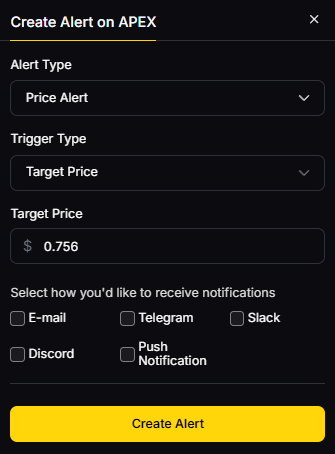
Primary CTA: Start free trial.

Security & Compliance Tips
- Enable 2FA and role-based access for index data portals.
- Map custody and pricing cut-offs to index valuation times.
- Align with KYC/AML when launching index-linked products.
- For RFQ/OTC hedging around rebalances, pre-plan execution windows.
- Staking/bridged assets: verify methodology treatment and risks.
This article is for research/education, not financial advice.
Beginner Mistakes to Avoid
- Assuming all “broad market” indices hold the same assets/weights.
- Ignoring venue eligibility—liquidity and data quality vary.
- Overlooking reconstitution buffers (can drive turnover and cost).
- Mixing reference rates and investable baskets in reporting.
- Not confirming licensing scope for marketing vs. product use.
FAQs
What is a crypto index provider?
A company that designs, calculates, and governs rules-based benchmarks for digital assets—ranging from single-asset reference rates to diversified market baskets—licensed for reporting or products.
Which crypto index is best for “core beta”?
For simple, liquid market exposure, many institutions look to BGCI or NCI due to broad recognition and liquidity screens; your use case and region may point to S&P/FTSE alternatives. Galaxy Asset Management+1
How do providers choose exchanges and assets?
They publish ground rules defining eligible venues (liquidity, compliance), asset screening, capping, and rebalances—see S&P, FTSE (with DAR), and CF Benchmarks for examples. S&P Global+2LSEG+2
Can I license a custom crypto index?
Yes—MarketVector and Vinter (among others) frequently build bespoke indices and act as calculation agents for issuers. MarketVector Indexes+1
What’s the difference between a reference rate and a market basket?
Reference rates (e.g., BRR, XBX) target a single asset’s robust price; market baskets (e.g., NCI, BGCI) represent diversified multi-asset exposure. Galaxy Asset Management+3CF Benchmarks+3CoinDesk Indices+3
Are these benchmarks available in the U.S. and EU?
Most are global; for EU/UK benchmark usage, verify authorization/registration (e.g., CF Benchmarks UK BMR) and your product’s country-specific rules. CF Benchmarks
Conclusion + Related Reads
If you need regulated reference pricing for settlement or NAVs, start with CF Benchmarks. For core market beta, BGCI and NCI are widely recognized. For institution-grade breadth, consider S&P DJI or FTSE Russell (with DAR). If you’re launching custom or thematic products, MarketVector and Vinter are strong build partners.
Related Reads:
- Best Cryptocurrency Exchanges 2025
- Top Derivatives Platforms 2025
- Top Institutional Custody Providers 2025
Sources & Update Notes
We reviewed official product pages, methodologies, and governance documents current as of September 2025. A short list of key sources per provider is below (official sites only; non-official data used only for cross-checks and not linked here).
- CF Benchmarks: “BRR – CME CF Bitcoin Reference Rate”; CME CF Cryptocurrency Benchmarks. CF Benchmarks+1
- S&P Dow Jones Indices: “Cryptocurrency – Indices”; “S&P Cryptocurrency Broad Digital Market Index.” S&P Global+1
- MSCI: “Digital Assets Solutions”; “Global Digital Assets Index Methodology.” MSCI+1
- FTSE Russell: “Digital Asset indices”; FTSE + DAR reference pricing overview/ground rules. LSEG+2LSEG+2
- Nasdaq: “Nasdaq Crypto Index (NCI)” solution page; NCI index overview; Hashdex NCI ETP replication note. Nasdaq+2Nasdaq Global Index Watch+2
- MarketVector: “Digital Assets Indexes” hub; “MarketVector Digital Assets 100 (MVDA).” MarketVector Indexes+1
- Bloomberg Galaxy: Galaxy “Bloomberg Indices (BGCI)” page; Bloomberg terminal quote page. Galaxy Asset Management+1
- CoinDesk Indices: “CoinDesk Indices” homepage; “XBX” page; NYSE/ICE collaboration release referencing XBX. CoinDesk Indices+2CoinDesk Indices+2
- Vinter: “Making Smarter Crypto Indexes for ETF Issuers”; example single-asset reference rate page. vinter.co+1
Wilshire: FT Wilshire Digital Asset Index Series page; methodology PDF. wilshireindexes.com+1


Get Your Brand in Front of 150,000+ Crypto Investors!




 Create Your Free Account
Create Your Free Account9450 SW Gemini Dr
PMB 59348
Beaverton, Oregon 97008-7105 US
.svg)
No Credit Card Required


Online Payment


SSL Encrypted
.png)
Products
Subscribe to Newsletter
Token Metrics Media LLC is a regular publication of information, analysis, and commentary focused especially on blockchain technology and business, cryptocurrency, blockchain-based tokens, market trends, and trading strategies.
Token Metrics Media LLC does not provide individually tailored investment advice and does not take a subscriber’s or anyone’s personal circumstances into consideration when discussing investments; nor is Token Metrics Advisers LLC registered as an investment adviser or broker-dealer in any jurisdiction.
Information contained herein is not an offer or solicitation to buy, hold, or sell any security. The Token Metrics team has advised and invested in many blockchain companies. A complete list of their advisory roles and current holdings can be viewed here: https://tokenmetrics.com/disclosures.html/
Token Metrics Media LLC relies on information from various sources believed to be reliable, including clients and third parties, but cannot guarantee the accuracy and completeness of that information. Additionally, Token Metrics Media LLC does not provide tax advice, and investors are encouraged to consult with their personal tax advisors.
All investing involves risk, including the possible loss of money you invest, and past performance does not guarantee future performance. Ratings and price predictions are provided for informational and illustrative purposes, and may not reflect actual future performance.




%201.svg)

